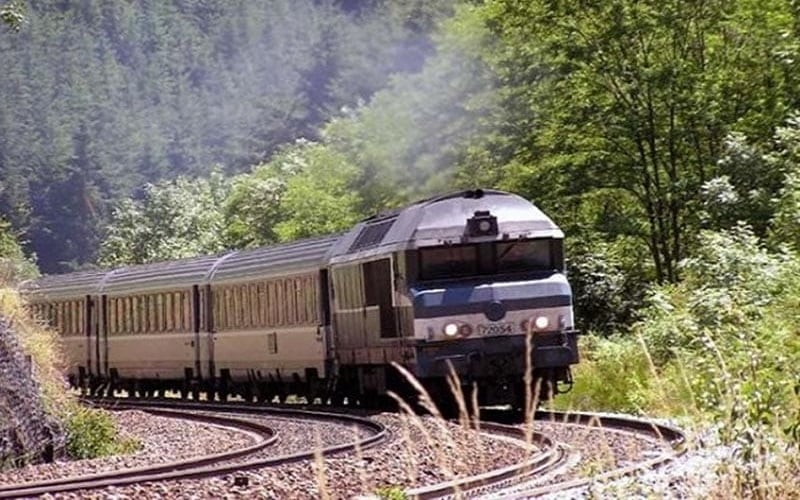An official from the Trade Union of Iranian Railway Transport Companies recently highlighted one of the critical issues plaguing the industry: the construction of railway lines for which there is little to no demand. The official, Ehsan Salari, pointed out that approximately 5,000 kilometers of railway lines in Iran remain unused.
On Wednesday, September 25, Salari emphasized that all new railway lines in the country were constructed as “single-track railways,” a decision he criticized as severely hampering traffic flow and reducing efficiency. According to him, these 5,000 kilometers of unused railway lines serve no practical purpose.
Salari further echoed concerns raised by the CEO of the Iranian Railway Company, who noted that less than 50% of the country’s locomotives are currently operational. This low operational capacity is exacerbated by the continued reliance on outdated diesel locomotives. “While the rest of the world has phased out diesel engines, Iran persists in importing old, worn-out locomotives from South Korea and bringing them into service with minimal repairs,” Salari added.
Rising Accidents and Poor Management
The condition of Iran’s railway infrastructure and its aging locomotive fleet has led to a spike in accidents. The CEO of the Iranian Railway Company reported in July that there had been 184 rail accidents in 2023 alone, averaging more than three accidents per week. This trend of frequent accidents reflects systemic mismanagement within the network.
In July 2022, the Secretary of the Association of Railway Transport Companies of Iran pointed out that accidents continue to recur due to the lack of accountability for those responsible. Minor issues are allowed to fester, turning into major crises. In one high-profile case, the head of the Supreme Accident Commission stated that all parties involved in the tragic Mashhad-Yazd train accident were held accountable. That accident, which occurred in May 2022, resulted in 21 deaths and 86 injuries.
Sobhan Nazari, the Secretary of the Association of Rail Transport Companies, revealed in June 2022 that the frequency of rail accidents had increased in recent months. He accused the railway company of deliberately withholding accident statistics from the public. Nazari further criticized the deterioration of both the rail fleet and the tracks, noting that many locomotives and wagons are in desperate need of extensive repairs or replacement. Some of these vehicles have been in operation for over 50 years.
Lagging Behind Global Standards
Iran’s railway system operates at a fraction of global efficiency levels. The productivity of Iran’s rail transport network is less than one-third of the global average, and in comparison to leading rail transport countries, the rate is closer to one-tenth.
Morteza Yazdkhasti, a member of the board of directors of Esfahan Steel Company, pointed out that the country aims to build 25,000 kilometers of new railway lines in the coming years. However, with only 15,000 kilometers of railways currently in operation, Iran has a long way to go to meet this goal.
Although Iran’s railway infrastructure is comparable in length to that of countries like Turkey, the volume of cargo transported by Iranian railways is significantly lower. Turkey’s rail network moves several times more cargo than Iran’s. According to Iran’s Sixth Development Plan, over 30% of the country’s freight should be transported by rail, yet the current figure is less than 7%, illustrating a severe shortfall.
Incomplete Projects and Delays
The Tehran-Qom-Isfahan high-speed rail project, launched nearly 18 years ago, is another glaring example of delays in the country’s rail development. Originally planned for completion in five years, the 450-kilometer railway remains unfinished in 2024. This high-speed line, a strategic component of Iran’s north-south transit route, is still far from complete, underscoring the broader issue of infrastructure development in the country.
Sanctions or Mismanagement?
As with many other sectors in Iran, the government blames international sanctions for the underdevelopment of its railway network. However, many critics argue that sanctions are merely a convenient excuse to cover up the regime’s inefficiency and mismanagement, as well as its misallocation of resources. Instead of focusing on critical infrastructure projects, the regime has been accused of diverting wealth into wasteful and destructive activities.
The challenges faced by Iran’s railway industry reflect deeper structural and managerial issues. Without addressing the core problems—mismanagement, lack of investment in modern technology, and failure to hold responsible parties accountable—the country’s rail infrastructure will likely continue to lag behind its potential.

